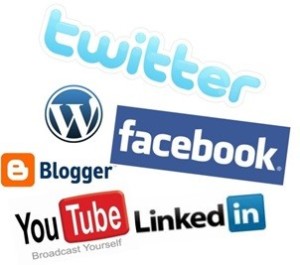One key element of a successful business is a strong marketing strategy, a plan of action that fits the specific industry, and for the healthcare provider, it can be quite comprehensive. The trick is to capitalize on “word-of-mouth” however that can be quite tricky considering your main competitor is your chosen insurance providers. The objective is to get people walking through the door, so you can provide them with an amazing patient experience, in which they will share with others.
This begins with a strong digital presence. The internet is where people go to find you, and learn all about the services you provide and the majority of those people can and will research their decision before they choose.
- Online search for healthcare providers is the 3rd most popular internet activity
- 80% of American web users look online for health information
- 44% of American web users look online for information about doctors or other health professionals
Don't panic, you have some control of how visible you are on the web and it all comes down to the quality of content you have online.
Website

Your website is the digital face of your practice, therefore it should look good. When a potential patient is scrolling through the multitude of providers, it only makes sense that you will be judged based on what your website is saying about you:
- A professionally designed website delivers a sense of comfort and stability. You want those visiting your site to feel you are well established, therefore a well-designed site with a medical appearance will ease the prospect into further review.
- Your website should not only explain all your services, it should also be informative. When someone is looking for a medical professional, it’s because they need to. They want answers, it’s your job to give them a source and provide them with a solution to their problem.
- Online appointment scheduler. Provide them a way to set an appointment and half the battle is one. (21% of patients book appointments online.) If they find a nice website for a provider that has answers, and they can set an appointment immediately, problem solved.
- Provide them with the ability to preregister, saving them and your practice valuable time.
A great website can do most of the work for you by making it simple for the patient to see the value in what you provide.
Today, ensuring your website is mobile ready is vital for success.
- 1/3 of patients search via phone or tablet
- 44% schedule an appointment via mobile device
People are relying more and more on their phones to do virtually everything, so when they start searching for a doctor, your website better be view-able on their phone.
Blog
Interesting fact, 58% of healthcare providers use blogs to educate their patients. Blogging is a great way to drive traffic to your website, especially when you are writing about specific
symptoms and conditions.
- 41% of searches start with symptoms
- 38% of searches start with specific conditions
Your blog should be informative enough for the reader to find value in what you are writing, and give them a sense of comfort in your ability. Educate your future patient on how you can help and provide a link that directs them to your appointment scheduler , you may find yourself hiring more staff to handle the overflow.
Social Media

People are talking about your services, and they are doing it at an unprecedented rate. Before social media it was just informing those they knew and came across. These days, one person can inform literally 1000’s with one click. 12% of all your clients can and will post online about an experience at your office, make sure it is a good one.
Social media plays a role in your visibility as well. The more traffic linking to your site, the better off you are when it comes to search. It’s High School all over again and the popular kids are getting all the attention. If you want to be seen, be sure you're dating the quarterback.
These days one cannot survive on Facebook alone. Your digital presence should be everywhere. I realize this takes time, I suggest either outsourcing or hiring someone to do it. The ROI is priceless and your practice will benefit in a multitude of ways.
Video
Your social media and blog should contain plenty of video.
- YouTube traffic to healthcare providers has increased 119% year-after-year
- 30% who watched a video booked an appointment (have a link to scheduler)
- 43% watch testimonials
- 64% watch to learn about your practice
- 56% watch videos to learn about procedures
Video drives online engagement and if you're not providing something, you're missing a great opportunity. Have a variety of video’s that will educate your prospective clients on such things as:
- What you do and how you do it
- Symptoms/conditions/treatments
- How to deal with health insurance companies
Follow your videos up with testimonials and have a link directly to the appointment scheduler and you have a recipe for success. I suggest using a high quality photographer for all your video and image needs, this will add an even more professional appearance to you and your practice.
Direct Marketing
As a healthcare provider, your efforts cannot be focused on digital alone. Many providers have great success using direct mail campaigns to inform the neighborhood on:
- Who they are
- What they do
- How to reach them
- Provide special offers and free consultations
Direct mail is a cost effective way to reach a very large target audience and will surely bring in plenty of new clients.
To learn more about direct mail marketing read Genius Marketing
You should also have a variety of brochures and counter cards to hand out. Share them with like-minded services so they may help get the word out about your business. Creating a couple strategic alliances with your fellow healthcare providers is a great way to grow your business so be sure they have plenty of brochures, cards and flyers about your practice, making it simple for the patient to connect with you.
Get involved with the Community
You are a healer. That is an amazing profession, and if you show the people you generally care about them, than they will follow you for life.
Get involved with the community by helping out with school organizations, local events and sponsor a local sports team. Show the people you aren't doing it for the money and the people will love you.
The Message

The message you are sending is key. If you're your message revolves around
wellness and preventative care, your missing the mark. All human behavior, at it's root is related to escaping some form of pain, therefore as a healer provide them with relief.
People don't seek out a doctor for entertainment, they do so because they need you. You entire strategy should revolve around how you can help by providing a solution to whatever ails them. They won’t waste time seeking you out, they want answers and they want them now. Make it easy for them to find you and your half way there.
Pain is a great motivator, so be great and sharing how you relieve it. If you're focusing on your digital content, be sure to provide solutions to the pain. If you're sending direct mail, your message should acknowledge their pain and your call to action should direct them to your practice so you can take it away.
















